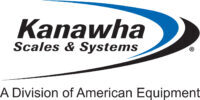Scale service and maintenance are essential for ensuring that scales continue to provide accurate and reliable measurements over time. Regular service and maintenance can help to extend the life of a scale and can also help to prevent costly repairs or downtime.
This article will serve as a quick guide to maintaining and repairing your industrial scale. Granted there are differences between platforms the general maintenance is still the same
The specific steps involved in scale service and maintenance will vary depending on the type of scale and its specific features and components. However, there are some common elements that are involved in most scale service and maintenance procedures, including
CALIBRATION
One of the key elements of scale service and maintenance is regular calibration of the scale. This involves comparing the measurements from the scale to a known weight and making any necessary adjustments to ensure that the scale is providing accurate readings.
Calibration should be performed at regular intervals, as specified by the manufacturer, and can typically be done by a trained technician or by the user. Keeping a calibration log can help you keep track of the calibration frequency for each scale. If you are a Kanawha Scales customer, you may already be using our WebView online calibration reporting portal.
INSPECTION
Another important element of scale service and maintenance is regular inspection of the scale and its components. This involves checking the scale for any signs of wear or damage, such as cracked or damaged load cells, worn bearings, or damaged cables. Any issues that are identified during the inspection should be addressed promptly to prevent further damage or loss of accuracy.
Typically, when you schedule any sort of maintenance for your scale, the technician performing the services will conduct an inspection before any work is performed. With most scales, a visual inspection will quickly let a scale technician if know something is wrong with the scale.
CLEANING
Regular cleaning is also an important part of scale service and maintenance. This involves removing any debris or build-up of material from the scale, such as dust, dirt, or moisture. This can be done using a variety of tools and techniques, such as brushes, compressed air, or vacuum cleaners.
Cleaning a scale is pretty straightforward depending on the type of scale. Ultimately when cleaning any scale, you want to make sure that you do not damage the load cell or the internals which can lead to more problems. When cleaning a truck scale deck, technicians will use a pressure washer to get all of the debris and dirt from the underside. Be sure to avoid spraying the load cells directly. Load cells have sensitive electronics inside, and water can damage them, thus calling for a more expensive repair.
LUBRICATION
In some cases, scale service and maintenance may also involve lubricating the moving parts of the scale. This is typically done using high-quality lubricants that are recommended by the manufacturer and involves applying the lubricant to the appropriate parts of the scale according to the manufacturer’s instructions.
If you have ever looked under a mechanical scale, you will see a lot of metal parts that if not properly lubricated, they are seized or rusted or both. There are parts of a scale that will need lubricant, but the best way is to refer to your owner’s manual for the best way to lubricate your scale.
IN CLOSING
Scale service and maintenance are essential for ensuring that scales continue to provide accurate and reliable measurements over time. Regular calibration, inspection, cleaning, and lubrication are all important elements of scale service and maintenance and can help to extend the life of a scale and prevent costly repairs or downtime.
These aforementioned factors are essential to keeping a well-maintained scale. Keep a schedule and a checklist to help you track when maintenance is performed and when maintenance and service is due. We can set up scale maintenance programs to take out the guesswork of scheduling and keeping track of upcoming services.
